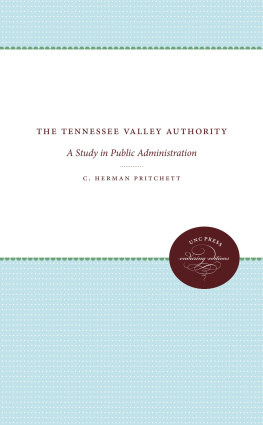HISTORICAL SMOKIANA.
Transcribers Note: This text was handwritten originally with many illustrations containing captions that were also handwritten. We have tried to represent the original as faithfully as possible which means that some sentences begin with lowercase letters, some sentences run on, inconsistent spelling is prevalent, etc. The HTML version contains the images of the original pages with transcriptions underneath.
A. 1586. D.
HISTORICAL
SMOKIANA.
ETHNOGRAPHICAL.
RALEIGH DRAKE
JIST a draw
noo.
Do you ken
the muxture?
R. T.
PRITCHETT. 1890
A 1890 D
RIGHTS RESERVED
Page 3
To
YE MEMORIE of
KING JAMES 1st.
counterblaste
of the past
&
To the ANTITOBACCOFRATERNITY
of the present day.
The following ETHNOGRAPHICAL
PLEBESCITE
is respectfully dedicated.
by their well wisher,
The Author & Sinner
RTP
Page 5
Ye PREFACE.
To
The Courteous Reader.
LONDON
Greeting
The stream of Conquest has generally flowed from North to South. The Triumph progress of the Goddess Nicotina has been from West to East starting in the 16th. century she has now girdled our little orb with devotees burning continuous incense. The Instruments connected herewith are objects of Historical & Ethnographical interest hence are brought together authentic Portraits of the Pipe Family. Briar root and Branch who judge from the favor in which they are now held. At home & abroad they seem likely to flourish for ever. I cannot close without expressing my thanks to Mr. Bernard Quaritels for placing then before you in their present Garb.
Your faithful Sinner & Author,
Robt. Pritchett.
AD
1890
Page 6
List of Illustrations.
| Page |
| Tobacco Plant 1669 AD |
| NICOTIANA flower. |
| German Woodcut 1616. AD. |
| Rich old Clays. |
| Broseley Clays. |
| Churchwardens. |
| Dutch Pipe Gear. |
| German Pipes. |
| Danish & N. Europe. |
| Algeria. |
| W. Africa. |
| Lagos & Ashantee. |
| Dahomy & Niger. |
| Wild Hemp smoking |
| Equatoria. |
| Stanley Expedn. |
| East Africa. |
| Bushmen. |
| Soap Stone Pipes. |
| Turkey. |
| Persian. 1669. AD |
| Hookah. India. |
| Hookah. Cashmere. |
| Indian Red clay. |
| Scinde. |
| Madras. |
| Narghile. Indore. |
| Yarkand. Asia. |
| Gourd Pipe. |
| Assam & Burmah. |
| China & Corea. |
| Opium Gear. |
| Japanese ditto |
| Borneo. |
| Sumatra & Java |
| Australia. |
| New Zealand. |
| New Guinea. |
| S. America. |
| N. America. |
| N. AMER. Stone Pipes |
| Canada. |
| Nootka Sound. |
| Arctic Pipes. |
| IGNITION. |
| Sumatra & Borneo. |
| S. America. |
| England old & New. |
Page 7
Tobacco Plants
&
their Varieties.
Although Smoking is generally associated with Tobacco only, yet there are other plants whose leaves are used for similar purposes & these will be referred to as we come to the different means of using them. Our first Woodcut of Tobacco is from STELLAROMA 1669. a work of
Page 9 DB STELLA ROMA. AD 1669. ILTABACCO TABACCO LATIFOGLIO. PRIMA specie. DELLA SECONDA Specie. TAB. ANGUSTIFOGLIO. TERZA SPECIE.
Page 10
great value as giving Pipes & the Hookah of Persia as well as Plants but we will start with some of the growths now most generally known of the NICOTIANA Family which is very widely spread over the face of the Earth & has of late made great strides in Borneo & Sumatra.
NICOTIANA TABACUM . (The mother of the family) Height 5 ft. Leaf 12in to 14in. Corolla Pink. Virginia manilla.
N. RUSTICA . Height 3 to 4 ft. Leaf 10in. to 12in. Corolla Greenish into Yellow. Turkey & India.
N. REPANDA . Small. Corolla white. Havannah.
N. PERSICA .or Bombay, all used in Persia by the Royal Family. (SHIRAZ tobacco).
N. AFFINIS is our Garden Plant with long tube 3in. with Corolla White. Very fragrant. Habitat. Isle of Pines. S. PACIFIC.
Page 11: NICOTIANA FRAGRANS WHITE. N. TABACUM. PINK. RTP.
Page 12
We are greatly indebted to old German woodcuts for solid information anent details of Habits & customs of the 16th. Century which our own people have not handed down to us, take for instance Hans Sachs. Book of Trades. Had smoking been in vogue in his day he would have given itor rather Jost Ammon would have illustrated it so here in 1616 AD we find a Sturdy German, blowing a tremendous cloud. It is taken from an old work now in Frankfurtviz
Vller Von Gellhausen ( ULRICUS ).
Das ist
Ein. Blumenbuck.
Small Folio.
Franckfurt
am Mayne.
M. Weixner. Formscheider und Mahler. AD 1616.
VLLER VON GELLHAUSEN AD 1616. Tabact. FRANKFURT AM MAYN.
Page 14
Pipes.
We have heard much of late of The STONE Period. The Bronze Period & the Iron Period & some one has gone so far as to say this is the Brass Tin Period. on all these scores SMOKIANA is strongly represented bringing forward The Brass Pipes of SUMATRA. It is surprising how widely diffused is STONE especially Soap stone. Amongst the following specimens will be found our Gourd. Periodbut as there is no place like Home we will begin with English clays, of which some are shown on the opposite page enriched by Tobacco of recent years..
Page 15: ENGLAND RICH OLD CLAYS 1689 AD 1575 A.D. 1600 A.D. FULLSIZE.
Page 16
BROSELEY SALOP.
The various stamps & names of early makers of Tobacco Pipes are most satisfactorily corroborated by the Parish Register and the families seem to have gone on prospering, but the sickle of Old Time has been put in & . & old things have passed away making room for new. The Four stamps given on the opposite Page are amongst the Earliest known. & of great interest. The quality of the Clay must have attracted the makers to that spotafter the introduction of Pipes to London, which had a Pipe makers Company .AD. 1619 & still continues establishments at Bow.. The Old Cock Tavern in Fleet Street had its own Token & its own Pipe.
Page 17: IOHN IAMS 1600 AD IOHN IONES AD 1590 BROSELEY CLAYS. SALOP. & their stamps. YE COCK TAVERN. 1660 1689 AD 1608 MOR RIS DECON AD. 1687 IOHN LEGG 1687.
Page 18
and old London as revealed in digging old foundations has yielded a great harvest of Pipe produce.. The museum at Guildhall has a very good collection. The Churchwarden Clay was the Pipe of the early part of this century & is still in the Country. It was considered right always to have a clean pipe hence they were stacked together in a double ring & sent to The Bake-house for Purification. The Irish Dudean originated the rich old clay most probably & the Scotch followed with Cutties, & The French with Fiolets bien Cullottesof Forty years ago. Milo in the Strand was the man for Colouring Clays which he made his Specialty.







